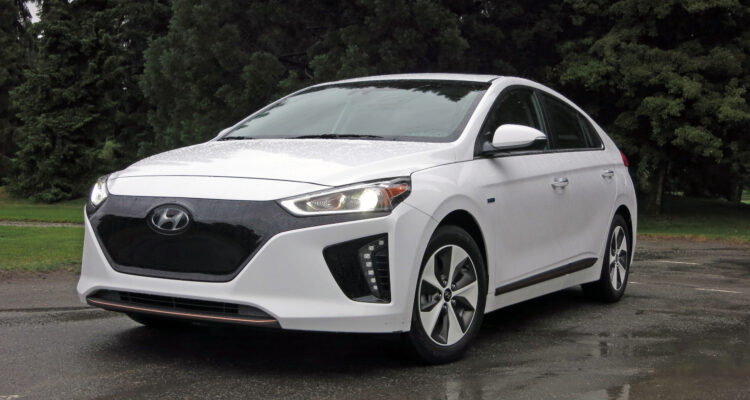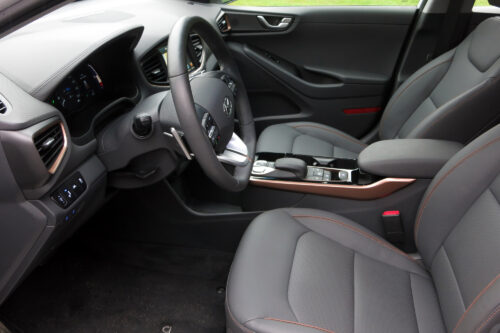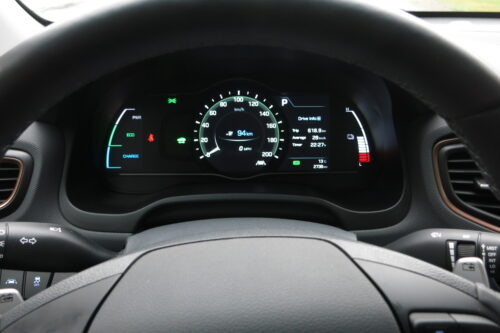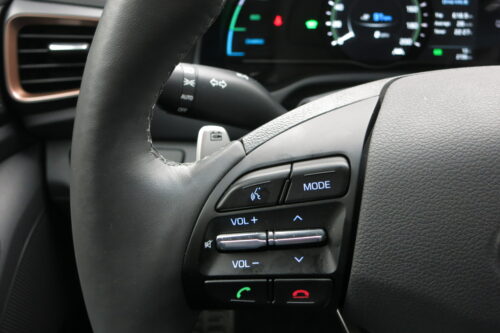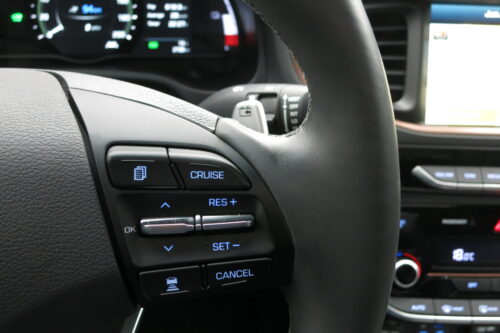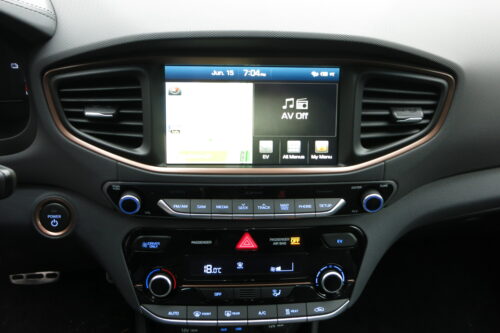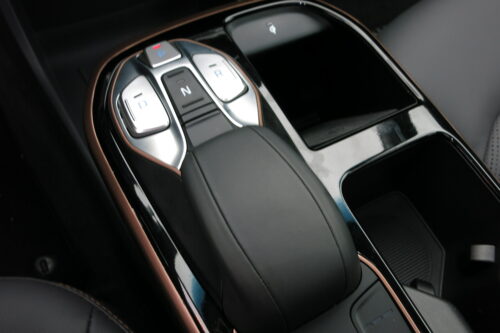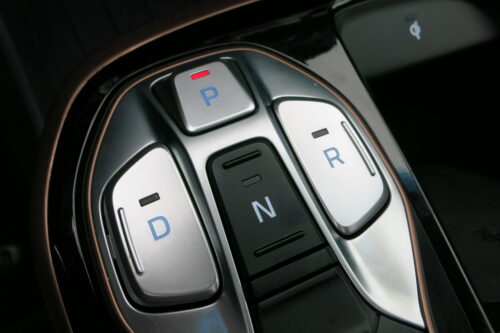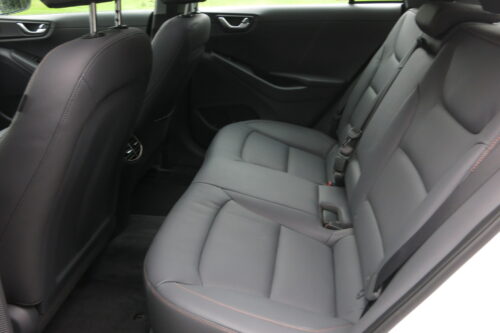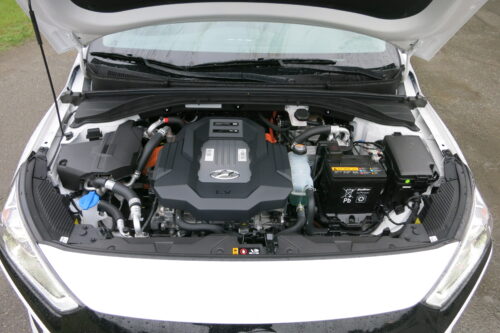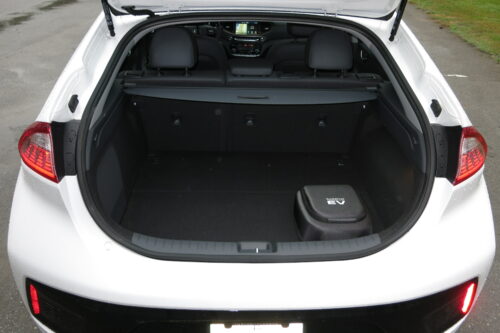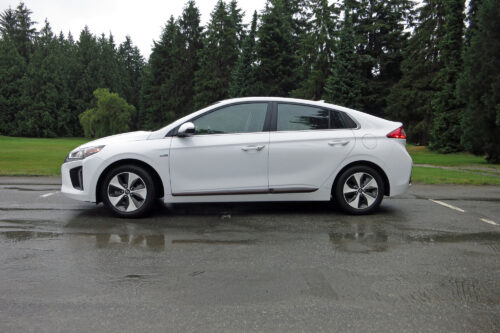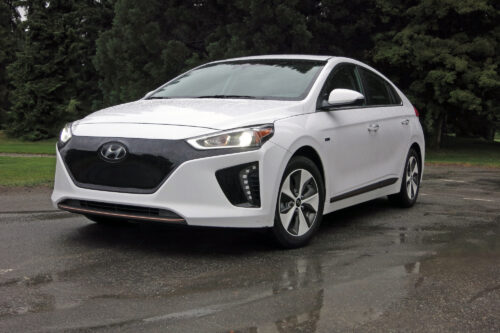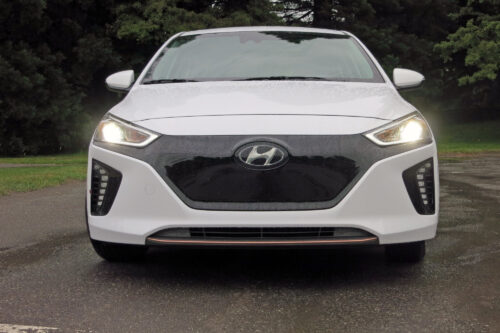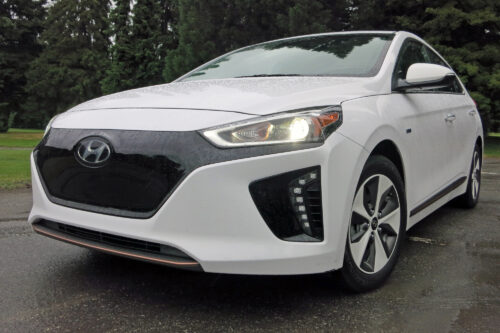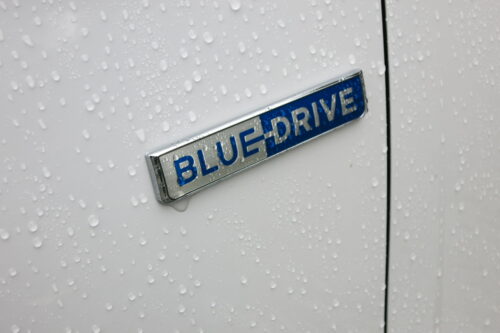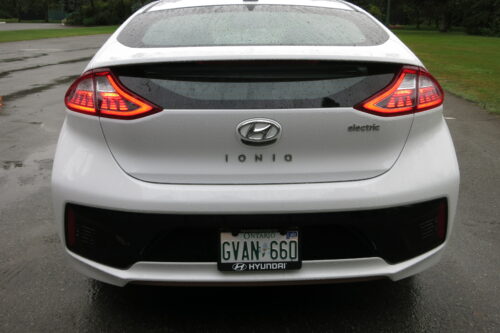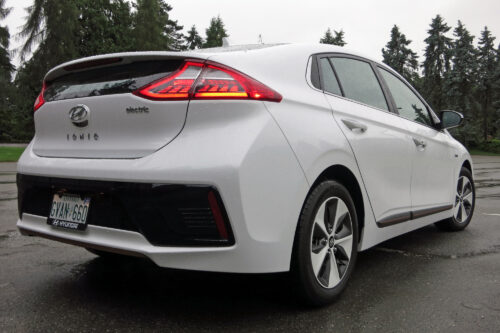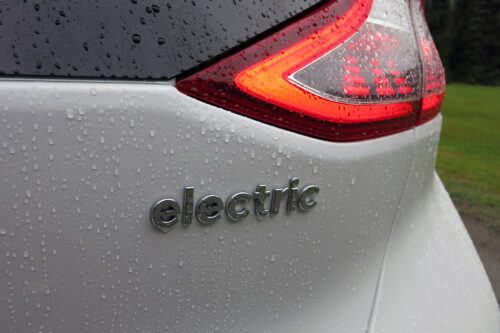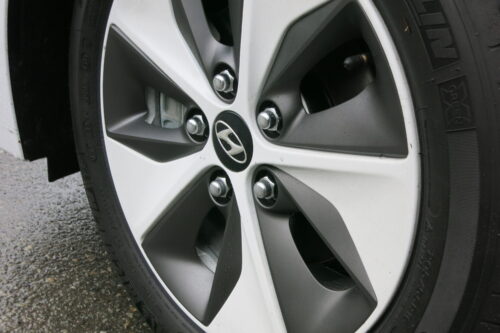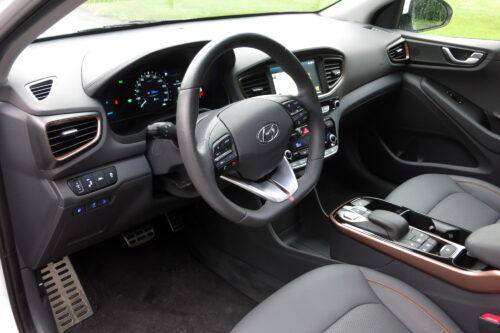Upscale and substantive for an EV
My week started in a most earth-friendly manner, and ended in just the opposite. Monday afternoon I jumped on my two-wheeled steed and cycled across town to pick-up this week’s Exhausted test vehicle, the fully electric 2017 Hyundai Ioniq.
All good so far.
I spent the week driving on a single charge thanks to the Ioniq’s 200km range. Friday arrived and I returned Hyundai’s new EV to the press fleet representative. This is where the story takes a pernicious twist.
Rather than transition into another eco-friendly vehicle, the obliging rep handed me the key to a supercharged, V8-powered 510 horsepower Range Rover Sport. All the good I had done during the week suddenly vanished as the Rover’s wasteful power plant rumbled to life.
But here’s the kicker: I enjoyed the Ioniq so much that I felt a sense of betrayal as I pulled out of the lot in the Range Rover, spewing harmful emissions from its twin exhaust pipes – something the Ioniq simply can’t do. Any feeling of eco-superiority had been replaced with eco-inferiority.
The Ioniq is the latest electric vehicle to join an increasing EV marketplace. It’s positioned among the likes of Nissan’s Leaf and Chevrolet’s highly-lauded Bolt. The Ioniq is a 5-door hatchback, which is pulled along by its front wheels with never a hint of torque-steer despite plenty of torque.
I easily lowered its 60/40-split rear seat to form a flat load floor and slid my bike into the expansive cargo bay without removing a wheel or lowering the saddle. Nice. I like practicality, and that in many ways that defines the Ioniq, which can also be purchased as a conventional hybrid vehicle in addition to full electric.
For me, the 200km range underscored the Ioniq’s practicality. While far from matching the Bolt’s claim of a 383km range, the Ioniq’s supply of juice was sufficient to last me the week without the need to plug in, and I still had 70 or so kilometres in the electronic tank upon return.
Just as important as range is the pleasure found behind an EV’s wheel. In my view, this is where the Ioniq shines brightest given that its range is not class-leading. The body structure of the vehicle benefits from Hyundai’s newly engineered Superstructure technology, which increases structural rigidity while reducing weight.
The strength of this platform allows the vehicle’s underpinnings to absorb the bumps and grinds of deteriorating city streets without jarring the cabin or upsetting it with unpleasant thumps and reverberation. Best of all, the Ioniq’s suspension is supple enough to deliver a smoother than expected ride; in fact, its ride dynamics belie a compact vehicle to the degree that the Ioniq feels larger and more substantial than it is.
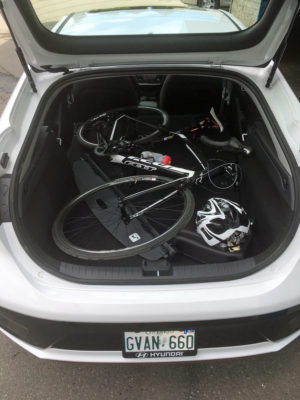
The sense of substance carries over to the look and feel of its spacious cabin. It should, however, be noted that Hyundai supplied me with the Limited trim version of the Ioniq, which included leather-lined seating and a comprehensive suite of driver aids and safety content.
Still, the performance attributes of the car will be found in the base SE model as well, which is fairly well-appointed but not equipped with the latest tech found in the Limited, such as adaptive cruise control, Forward Collision Avoidance with pedestrian detection, and Lane Departure Warning.
Both versions of the Ioniq Electric are powered by an 88kW electric motor developing 118 horsepower and 218 lb-ft of torque. While Chevy’s Bolt may have more raw power, the Ioniq never feels inadequately armed.
Its three drive modes – Normal, Eco, and Sport – allow the driver to customize the motor’s response mapping. I was quite content with the eco-mode, which helped conserve the battery’s charge by delivering propulsion more slowly and progressively.
Overall, the Ioniq is an exceptionally pleasant car to drive. In my humble opinion, it delivers a more upscale driving experience than its competitors, though its range and straight-line performance may be eclipsed by some of the alternatives in its class.
The base Ioniq Electric starts at $35,649 while the Limited is tagged at $41,849. Provincial incentives vary across Canada for electrified vehicles. Check your province’s plan and you may be surprised at how affordable Hyundai’s new electric car can be.
And here’s a little secret to keep from the ears of the Jaguar Land Rover folks: I enjoyed driving the Ioniq Electric around town more than I did the $109,000 510 hp. Range Rover Sport Autobiography!
2017 Hyundai Ioniq Electric
Price as tested (before taxes): $41,849.00
Configuration: front motor, front-wheel drive
Engine/transmission: 88kW motor direct drive
Power/torque: 118 hp / 218 lb-ft
Range on full charge: 200 km
Warranty (basic): 5 years / 100,000 km
Competitors: BMW i3, Chevrolet Bolt, Ford Focus Electric, Kia Soul Electric, Nissan Leaf
Related links:
Hyundai Canada
Driving.ca



